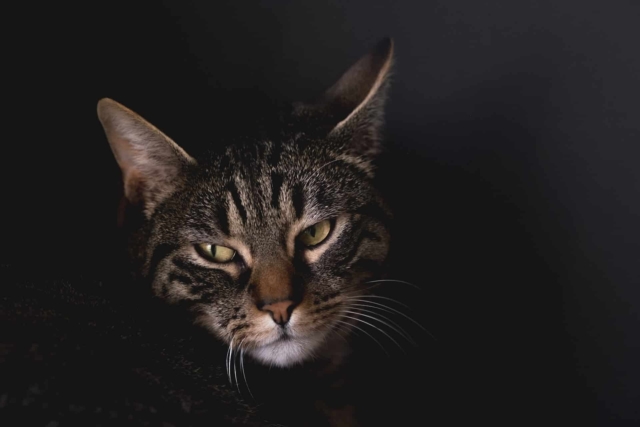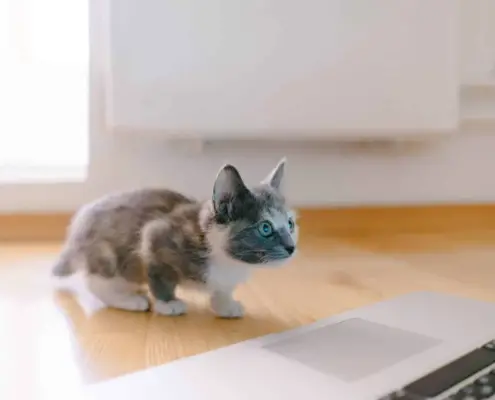
Cats have long fascinated humans with their mysterious and enigmatic nature. While they are known to be independent creatures, their behavior becomes even more intriguing when the lights go out. What do cats do in the darkness? This question has puzzled pet owners and researchers alike. In this article, we will delve into the nocturnal world of cats and explore their activities during nighttime.
Understanding a Cat’s Nocturnal Nature
Cats are crepuscular animals, which means they are most active during the twilight hours of dawn and dusk. Their eyes are designed to adapt to low light conditions, allowing them to see clearly in the darkness. This evolutionary adaptation enables them to navigate their surroundings and hunt efficiently during nighttime. While cats are not strictly nocturnal like owls or bats, they do exhibit behaviors that are more pronounced in the dark.
Hunting Instincts of Cats at Night
One of the primary activities cats engage in during the darkness is hunting. Cats are natural predators with a strong instinct to stalk and capture prey. In the wild, their prey consists of small animals such as mice, rats, and birds. When the sun sets and the world quiets down, cats tap into their hunting instincts. They use their acute hearing and excellent night vision to silently stalk their prey. The darkness provides them with an advantage, as they can move unnoticed and surprise their unsuspecting target.
Cats employ a combination of stealth, patience, and agility during their nighttime hunts. They crouch low to the ground, their eyes fixed on their target. Their muscles tense as they prepare to pounce. When the moment is right, they spring into action, using their sharp claws and teeth to catch their prey. Even domesticated cats exhibit these hunting behaviors, although their prey may consist of toys or insects rather than live animals.
Exploring Their Territory in Darkness
Cats are territorial animals, and the cover of darkness allows them to explore their domain without interference. When the sun sets, the world becomes quieter, and the streets are less crowded. This gives cats a sense of freedom and security to roam around and mark their territory. They leave behind scent markings through rubbing their cheeks against objects and scratching surfaces with their claws. These scent markings serve as a way for cats to communicate with other cats, signaling their presence and asserting their ownership of a particular area.
During their nighttime explorations, cats also engage in boundary patrols. They carefully patrol the edges of their territory, investigating any changes or intrusions. This behavior is instinctual and helps cats maintain control over their territory. By doing so, they can detect any potential threats or intruders and take appropriate action to defend their domain.
Social Interactions Among Cats in the Darkness
While cats are often seen as solitary animals, they do engage in social interactions, especially during nighttime. Cats have a complex social structure that involves establishing hierarchies and maintaining social bonds. In the dark, when distractions are reduced, cats are more likely to interact with other cats in their vicinity.
These social interactions can take various forms, such as grooming each other, playing together, or engaging in friendly wrestling matches. Cats use vocalizations, body language, and scent cues to communicate with other cats. These interactions not only provide companionship but also help cats establish and reinforce social bonds within their feline community.
Different Sleeping Patterns of Cats
Cats are known for their love of sleep, and their sleeping patterns can vary depending on the time of day. During the daylight hours, cats may sleep for extended periods, conserving their energy for the more active nighttime hours. They find cozy spots to curl up and rest, often seeking warmth and comfort.
As the sun sets and darkness falls, cats become more alert and active. They may take short naps throughout the night, but they are also prone to periods of heightened activity. This shift in their sleep-wake cycle is influenced by their natural instincts and the availability of prey during the nighttime hours.
Playtime and Exploration During Nighttime
The darkness of night provides an ideal backdrop for cats to engage in play and exploration. With reduced visibility, their senses are heightened, making every movement and sound more exciting. Cats may chase shadows, pounce on imaginary prey, or engage in acrobatic jumps and twists. This playtime not only entertains them but also helps them hone their hunting skills and maintain their physical fitness.
Nighttime exploration is also an opportunity for cats to satisfy their curiosity. They may investigate new scents, sounds, and objects in their environment. This exploration allows cats to gather information about their surroundings and expand their understanding of the world.
Common Myths About Cats at Night
There are several myths and misconceptions surrounding cats and their behavior at night. One common belief is that cats are more likely to engage in destructive behavior during the darkness. While cats may exhibit increased activity levels, it is essential to provide them with appropriate outlets for their energy, such as toys and scratching posts. Another myth suggests that cats are prone to getting lost or injured during nighttime adventures. However, most cats are skilled at navigating their surroundings and rely on their keen senses to avoid potential dangers.
Tips for Providing a Stimulating Environment for Cats in the Darkness
As responsible cat owners, it is our duty to ensure that our feline companions lead fulfilling lives, even in the darkness. Here are some tips for providing a stimulating environment for cats during nighttime:
- Create a safe and secure indoor environment that allows cats to explore and play without encountering any hazards.
- Provide interactive toys that mimic the movements of prey, such as feather wands or laser pointers, to engage your cat’s hunting instincts.
- Set up a designated play area where your cat can engage in physical activities and enjoy playtime during the night.
- Install a cat tree or shelves at varying heights to encourage climbing and provide vertical space for your cat to explore.
- Use puzzle feeders or hiding treats around the house to provide mental stimulation and mimic the hunting experience.
- Consider using nightlights or dim lighting to create a more visually stimulating environment for your cat.
By implementing these tips, you can ensure that your cat remains mentally and physically stimulated during the darkness, leading to a happier and healthier feline companion.
Conclusion
Cats have a fascinating nocturnal nature that is full of mystery and wonder. From their hunting instincts to their social interactions, cats exhibit a range of behaviors when the lights go out. Understanding and appreciating their nighttime activities can help us provide a stimulating environment that meets their needs. So the next time you wonder what your cat does in the darkness, remember that they are embracing their instincts, exploring their territory, and engaging in playful adventures. Embrace the mystery and let your cat thrive in the darkness.
Enhance your cat’s nighttime experience with interactive toys and a stimulating environment.
If you enjoyed my article, I would appreciate you sharing it with your network.

Sima Ndlebe
Sima writes for CatBuzz. He is interested in Cats, Health and Fitness, and Entrepreneurship.
Published: 15 November 2023




